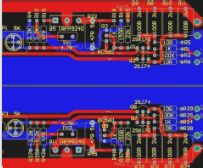When Bell, the inventor of the telephone, studied sound, he defined the scale of sound as the “bel”. When the intensity of a sound increases by a factor of ten, the increase in loudness is referred to as 1 bel. This unit is used to compare power levels in electrical communications or sound intensity, representing a ratio of 10:1. Since the bel is quite a large unit, its tenth part, the decibel (dB), was introduced. A 1 dB increase in loudness corresponds to a tenfold increase in sound intensity. In other words, one-tenth of a bel is equal to one decibel. The decibel is a unit used to measure sound intensity or electrical signal power levels by comparing them to a given reference level on a logarithmic scale.
On the decibel scale, the lowest audible sound (near complete silence) is 0 dB. A sound with 10 times the intensity is represented as 10 dB, a sound with 100 times the intensity is 20 dB, and a sound with 1,000 times the intensity is 30 dB.
In RF (Radio Frequency) design, dB is used as a logarithmic scale with a base of 10 to express ratios of power or intensity.

Although dB is a very convenient unit, does that mean we can apply it freely in all situations? For example, if we use a three-port power splitter as a power combiner and input 30 dBm signals into each of the two input ports, what will be the output power at the output port? Is it 30 dBm + 30 dBm = 60 dBm? The answer is incorrect. A 3 dB increase represents a significant portion of the power, so the correct result is 30 dBm + 30 dBm = 33 dBm.
In addition, it is important to distinguish between voltage gain and power gain. The dB for voltage gain is calculated as 20 times the logarithm (base 10) of the ratio between the output voltage and input voltage.

The dB for power gain, on the other hand, is calculated as 10 times the logarithm of the ratio between the output power and input power.

The reason for this difference lies in the fact that our primary focus is on radio frequency (RF) power. If we want to apply the decibel formula to voltage, we must first consider the relationship between power and voltage:

In other words, power gain is the square of voltage gain, and this squaring operation results in the factor of 10 being multiplied by 2 in the logarithmic calculation.

If you have any questions about PCBs or PCBA, please feel free to contact me at info@wellcircuits.com.




